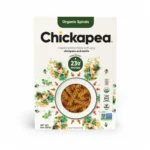Portobello mushrooms are a variety of mushroom that have become increasingly popular in recent years. Their large, meaty texture makes them a great vegetarian substitute for burgers and other dishes. But can you eat portobello mushrooms raw?
Portobello mushrooms have a very different taste and texture when eaten raw rather than cooked. Some people love the earthy flavor and crunchy bite of raw portobello mushrooms. However, there are also some safety concerns with eating them uncooked.
This article will take a detailed look at the pros and cons of eating raw portobello mushrooms. We’ll cover:
- What are portobello mushrooms?
- Nutritional benefits of portobello mushrooms
- Can you eat raw portobello mushrooms?
- Health benefits of raw portobello mushrooms
- Potential risks of eating raw portobello mushrooms
- How to clean and prepare raw portobello mushrooms
- Cooking alternatives for safe portobello mushroom consumption
- Expert opinions on eating raw vs cooked portobello mushrooms
Let’s start with the basics – what exactly are portobello mushrooms?
What Are Portobello Mushrooms?
Portobello mushrooms are a mature version of small crimini mushrooms. They are tan-brown in color with a thick, meaty texture. The caps of portobello mushrooms can grow very large, up to 6 inches across.
Unlike button mushrooms, portobello mushrooms have a deeper, earthier flavor. Their texture is also firmer and more substantial. When cooked, portobello mushrooms take on a rich, almost meaty flavor.
Portobello mushrooms contain a number of important nutrients:
-
Fiber – A 1 cup serving contains 5g of dietary fiber. This supports digestive and heart health.
-
Potassium – Portobellos are a good source of potassium. This mineral helps regulate fluid balance and nerve signals.
-
Copper – Copper helps form red blood cells and keeps the immune system healthy.
-
Vitamin B-5 – Also called pantothenic acid, this vitamin aids cellular energy production.
-
Selenium – A trace mineral that supports thyroid gland function and immune health.
Due to their large size, meaty texture, and savory flavor, portobello mushrooms are popular grilled, roasted, or used as burger substitutes.
Now that we know a bit about what portobellos are, let’s look at the safety and benefits of eating them raw.
Can You Eat Raw Portobello Mushrooms?
So can you eat raw portobello mushrooms? The short answer is yes, you can eat portobellos raw.
However, there are some safety precautions you should take when eating raw mushrooms.
Many types of mushrooms contain natural toxins called hydrazines. In their raw form, these toxins can cause stomach upset in some people. Cooking mushrooms breaks down the cell walls and reduces levels of hydrazines.
Eating raw mushrooms also comes with a risk of foodborne illness if they are contaminated with bacteria. Proper food safety precautions should be taken when handling raw portobellos.
To eat raw portobello mushrooms more safely:
- Purchase mushrooms from a reputable source
- Wash thoroughly under cold running water
- Slice off woody stems which are harder to digest
- Slice mushrooms thinly to reduce chewing time
- Limit portion size at first to see how your body tolerates them
Some people may be more susceptible to negative effects from raw mushrooms. Children, pregnant women, older adults, and those with compromised immune systems should avoid eating raw mushrooms.
If properly handled, many people can eat raw portobello mushrooms safely. You can gain benefits from their unique texture and flavor when served raw.
Health Benefits of Raw Portobello Mushrooms
Eating raw fruits and vegetables provides health benefits from vital nutrients. Raw portobello mushrooms contain beneficial compounds and antioxidants that may be diminished during cooking.
Potential health benefits of raw portobello mushrooms include:
-
High antioxidant content – Raw portobellos contain antioxidants like ergothioneine and selenium which help fight free radicals and oxidative damage to cells. Cooking can decrease antioxidant levels in some foods.
-
Prebiotic fiber – The indigestible fiber in portobello mushrooms feeds beneficial gut bacteria. This promotes healthy digestion and immune function.
-
Anti-inflammatory effects – Compounds like conjugated linoleic acid (CLA) in raw mushrooms have anti-inflammatory properties that support overall health.
-
Immune-boosting action – Certain polysaccharides and metabolites found in raw mushrooms can strengthen immune function by enhancing the activity of protective cells.
-
Bioavailable nutrients – Some nutrients like vitamin C and B vitamins are more bioavailable in raw produce. Cooking can cause leaching of water-soluble nutrients.
Keep portion sizes of raw portobellos moderate. Introduce them slowly to assess your body’s reaction. Overall, enjoying raw portobello mushrooms occasionally may provide beneficial antioxidants, fiber, and nutrients.
Potential Risks of Eating Raw Portobello Mushrooms
While moderate intake of raw portobello mushroom is likely safe for most people, there are some potential health risks to be aware of:
-
Digestive issues – The chitin in raw mushroom cell walls is hard to digest for some people. This can cause gas, bloating, and stomach pain.
-
Toxic compounds – Low levels of heat-sensitive toxins like agaritine and phenolic compounds may cause nausea or dizziness in sensitive individuals, especially when eaten in excess.
-
Bacteria risk – Raw mushrooms may contain dangerous bacteria like E. coli or Salmonella. Proper handling and washing techniques are important.
-
Allergic reactions – Some individuals may have allergies to mushrooms. An allergic response may cause itching, rash, or swelling.
-
Medication interactions – The MAO-inhibiting properties of raw tyrosine in mushrooms can interact dangerously with antidepressants and cause high blood pressure.
While rare, there have been instances of liver damage from eating raw mushrooms. Toxic effects are usually only seen with excessive consumption.
As with any food, moderation is key. Introduce raw mushrooms slowly and avoid overindulging to prevent adverse reactions.
How to Clean and Prepare Raw Portobello Mushrooms
If you want to eat portobello mushrooms raw, proper storage, cleaning, and preparation is very important. Here are some tips for handling raw portobellos:
-
Choose fresh, firm mushrooms without slimy spots or damage. Avoid any with an off smell.
-
Store portobello mushrooms in the refrigerator in a paper bag or wrapped in a damp paper towel. Use within 3-5 days.
-
Clean mushrooms just before eating. Don’t soak them—this can cause them to absorb bacteria.
-
Run each mushroom under cold water while gently rubbing the cap and stem with your fingers.
-
Use a soft brush or cloth to clean the underside of the mushroom caps.
-
Trim off the woody bottom of the stems which can be difficult to chew and digest.
-
Pat mushrooms dry with a paper towel. Don’t eat any parts that look discolored.
-
Slice mushrooms thinly to reduce chewing time and exposure to potential toxins.
-
Enjoy portobellos raw in a salad, sandwich, or as a wrap filling by pairing them with acidic ingredients like lemon juice or vinegar which aid in digestion.
Proper handling and preparation methods help reduce any risks associated with consuming raw mushrooms.
Cooking Alternatives for Safe Portobello Mushroom Consumption
If you want to avoid any possible risks of eating raw mushrooms, cooking portobellos is recommended. Not only does cooking make mushrooms safer to eat, it also brings out their delicious, earthy, umami flavor.
Some healthy ways to cook portobello mushrooms include:
-
Grilling – This adds great charred flavor. Brush caps with olive oil and grill 2-3 minutes per side.
-
Roasting – Toss halved or sliced mushrooms with oil, salt, and pepper. Roast at 400°F for 15-20 minutes, stirring halfway.
-
Sauteing – Quickly cook sliced portobellos in a skillet over medium-high heat with garlic and fresh herbs.
-
Adding to soups or stews – The flavor of portobellos enhances rich soups and stews. Add them during the end of cooking.
-
Mixing into grains – Diced, cooked mushrooms provide extra flavor and nutrition to cooked rice, quinoa, or oats.
-
Using in place of ground meat – Finely chop and cook portobellos as a healthier, vegetarian substitute for ground beef in dishes like pasta sauce.
Cooking portobello mushrooms helps break down their cell walls for easier digestion and lowers levels of toxins. Introduce cooked portobellos into your diet to get all the benefits of mushrooms safely.
Expert Opinions on Eating Raw vs Cooked Portobello Mushrooms
Should you eat portob
https://mary-catherinerd.com/can-you-eat-portobello-mushrooms-raw/
https://www.quora.com/Why-we-should-not-eat-portobello-cremini-or-button-mushrooms-without-cooking-them-at-high-temperatures




